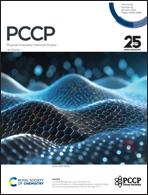Lithium-ion battery electrode properties of hydrogen boride†
Abstract
Recently, hydrogen boride (HB) with a pseudo-two-dimensional sheet structure was successfully synthesized, and it is theoretically predicted to have high potential as a negative electrode material for alkali metal ion batteries, making it a promising new candidate. This study represents the first experimental examination of the negative electrode properties of HB. HB was synthesized via cation exchange from MgB2. The confirmation of HB synthesis was achieved through various spectroscopic experiments, including synchrotron radiation X-ray diffraction and X-ray photoelectron spectroscopy, in addition to direct observation using transmission electron microscopy. The HB electrode was prepared by mixing the HB powder sample with conductive additive carbon black and a polymer binder. A test cell was assembled with the HB electrode as the working electrode, and lithium metal as the counter and reference electrodes, and its battery electrode properties were evaluated. Although reversible charge–discharge curves with good reversibility were observed, the reversible capacity was 100 ± 20 mA h g−1 which is significantly smaller than the theoretical predictions. Nitrogen gas adsorption experiments were performed on the HB powder sample to determine the specific surface area indicating that the HB sheets were stacked together. It is plausible to consider that this stacking structure led to a reduced lithium-ion storage capacity compared to the theoretical predictions.



 Please wait while we load your content...
Please wait while we load your content...